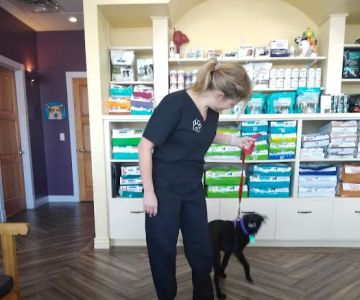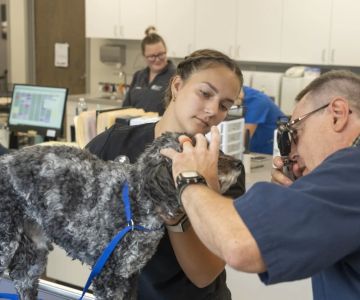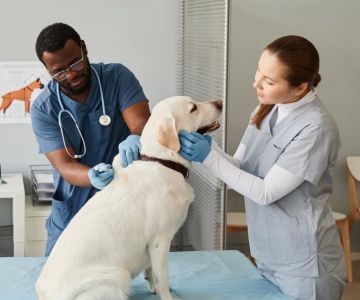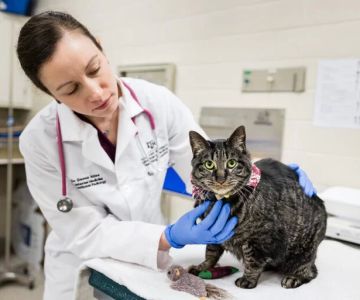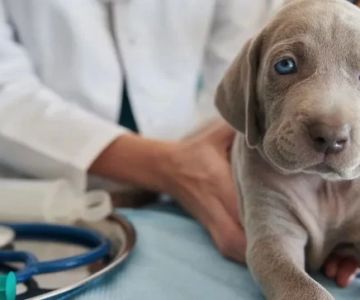- 1-Veterinarian-degree-overview
- 2-Educational-path-to-becoming-a-veterinarian
- 3-Vet-school-admission-requirements
- 4-Core-curriculum-and-skills-in-veterinary-programs
- 5-Specializations-and-advanced-training-options
- 6-Real-life-veterinarian-career-journey
- 7-Making-your-veterinary-degree-investment-work-for-you
1. Veterinarian Degree Overview
If you’ve ever wondered, “What degree do I need for a veterinarian?” the answer is both straightforward and detailed. Becoming a licensed veterinarian requires earning a Doctor of Veterinary Medicine (DVM or VMD) degree. This degree is a professional doctorate, focusing extensively on animal health, biology, pharmacology, surgery, and patient care. It typically takes four years of specialized education following a bachelor’s degree.
The DVM degree is accredited by the American Veterinary Medical Association (AVMA), ensuring rigorous standards that prepare students to diagnose, treat, and prevent diseases in animals, from pets to livestock. Understanding this degree’s scope is the first step toward a rewarding veterinary career.
2. Educational Path to Becoming a Veterinarian
The path to a veterinary career begins with undergraduate studies, where students usually pursue a bachelor’s degree in biology, animal science, or a related field. Courses in chemistry, physics, genetics, and anatomy build a strong foundation. After completing undergraduate prerequisites, students apply to vet schools offering the DVM program.
Vet school is highly competitive, requiring strong academic records and relevant experience such as internships or volunteering with animals. The DVM program immerses students in advanced medical training, clinical rotations, and research opportunities, shaping well-rounded veterinary professionals.
2.1 Bachelor’s Degree vs. Direct Entry
Some students wonder if direct entry into vet school is possible without a bachelor’s degree. In the US, most accredited veterinary schools require completion of specific undergraduate courses, often equivalent to a bachelor’s degree or at least two to three years of pre-vet education.
3. Vet School Admission Requirements
Admission into vet school involves more than just grades. Applicants must demonstrate proficiency in science courses, submit standardized test scores (such as the GRE), and provide letters of recommendation. Veterinary schools also value hands-on experience with animals, leadership skills, and a commitment to animal welfare.
In addition, personal statements and interviews evaluate candidates’ motivation and readiness for the demanding veterinary profession. Understanding and preparing for these requirements increases the chances of acceptance into top programs.
4. Core Curriculum and Skills in Veterinary Programs
Once enrolled in a DVM program, students engage in a curriculum covering anatomy, physiology, pharmacology, pathology, microbiology, and surgery. Clinical skills are honed through hands-on practice with animals under faculty supervision. Courses also cover public health, ethics, and client communication, critical for successful practice.
The program culminates in clinical rotations where students work in real veterinary hospitals, gaining exposure to small animals, large animals, and specialized care. This combination of theory and practice equips graduates to enter the workforce confidently.
5. Specializations and Advanced Training Options
After earning a DVM, veterinarians may pursue further specialization through internships, residencies, or board certification in areas like surgery, dermatology, oncology, or exotic animal care. This advanced training enhances expertise and can open doors to specialized career opportunities or academic positions.
Choosing a specialization often depends on personal interests and career goals. For example, a veterinarian passionate about wildlife may pursue a residency in zoo or wildlife medicine, while another might focus on small animal surgery.
6. Real-Life Veterinarian Career Journey
Dr. Sarah Mitchell’s journey illustrates the veterinarian degree process vividly. She began with a bachelor’s in biology, volunteered at animal shelters, and worked in veterinary clinics. After gaining admission to a competitive vet school, she excelled in her studies and completed clinical rotations across various settings.
Today, Dr. Mitchell specializes in canine oncology and credits her extensive education and real-world experience for her success. Her story shows how commitment to education and passion for animals combine to build a fulfilling career.
7. Making Your Veterinary Degree Investment Work for You
Investing in a veterinarian degree is significant both financially and time-wise. To maximize this investment, consider joining professional organizations, attending conferences, and networking with peers. Continuous learning through workshops and certifications keeps skills sharp and career prospects broad.
If you’re passionate about animals and ready to embark on this challenging yet rewarding path, start by researching accredited veterinary programs and preparing your application carefully. Resources like pre-vet advisors and forums can provide valuable guidance.
Ready to take the next step? Explore accredited vet schools, understand degree requirements, and get inspired by stories like Dr. Mitchell’s. Your journey to becoming a veterinarian begins with the right degree and a commitment to lifelong learning.


